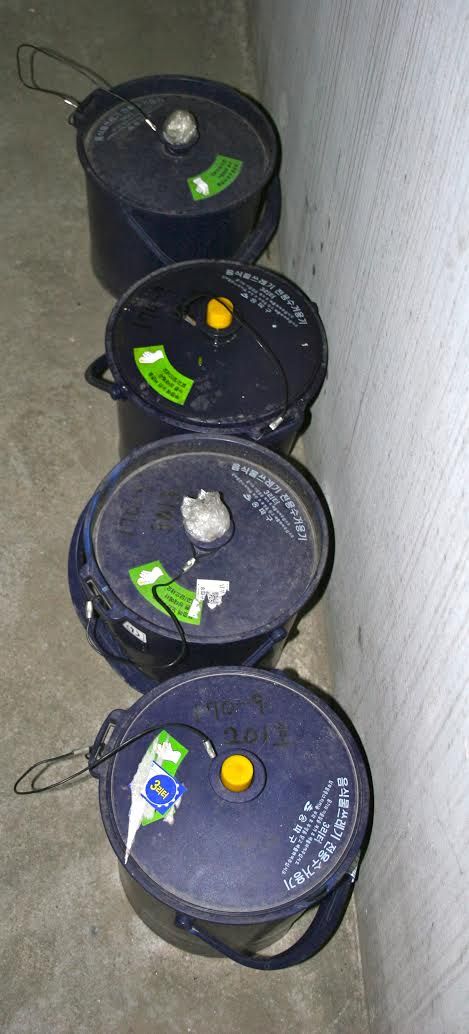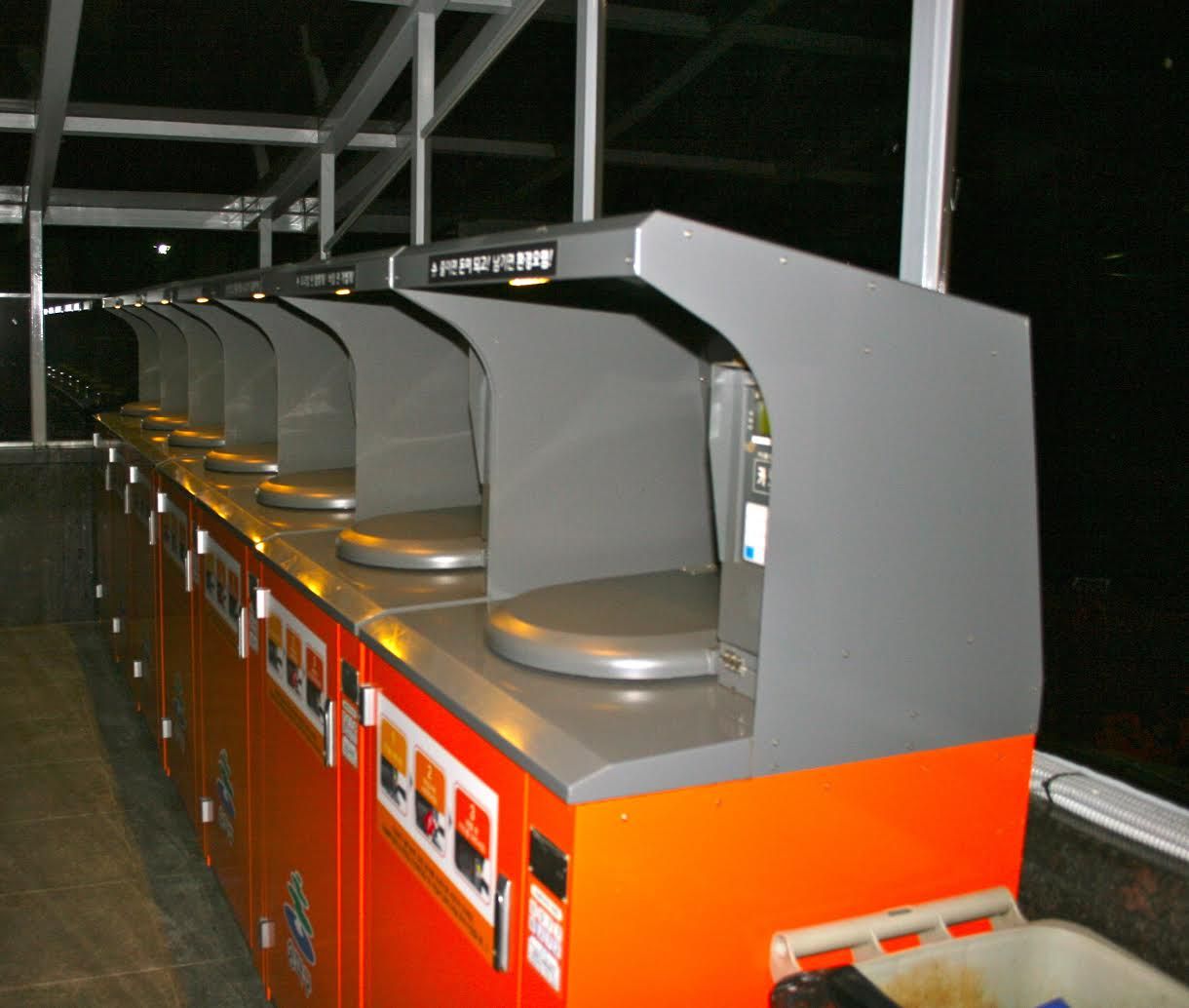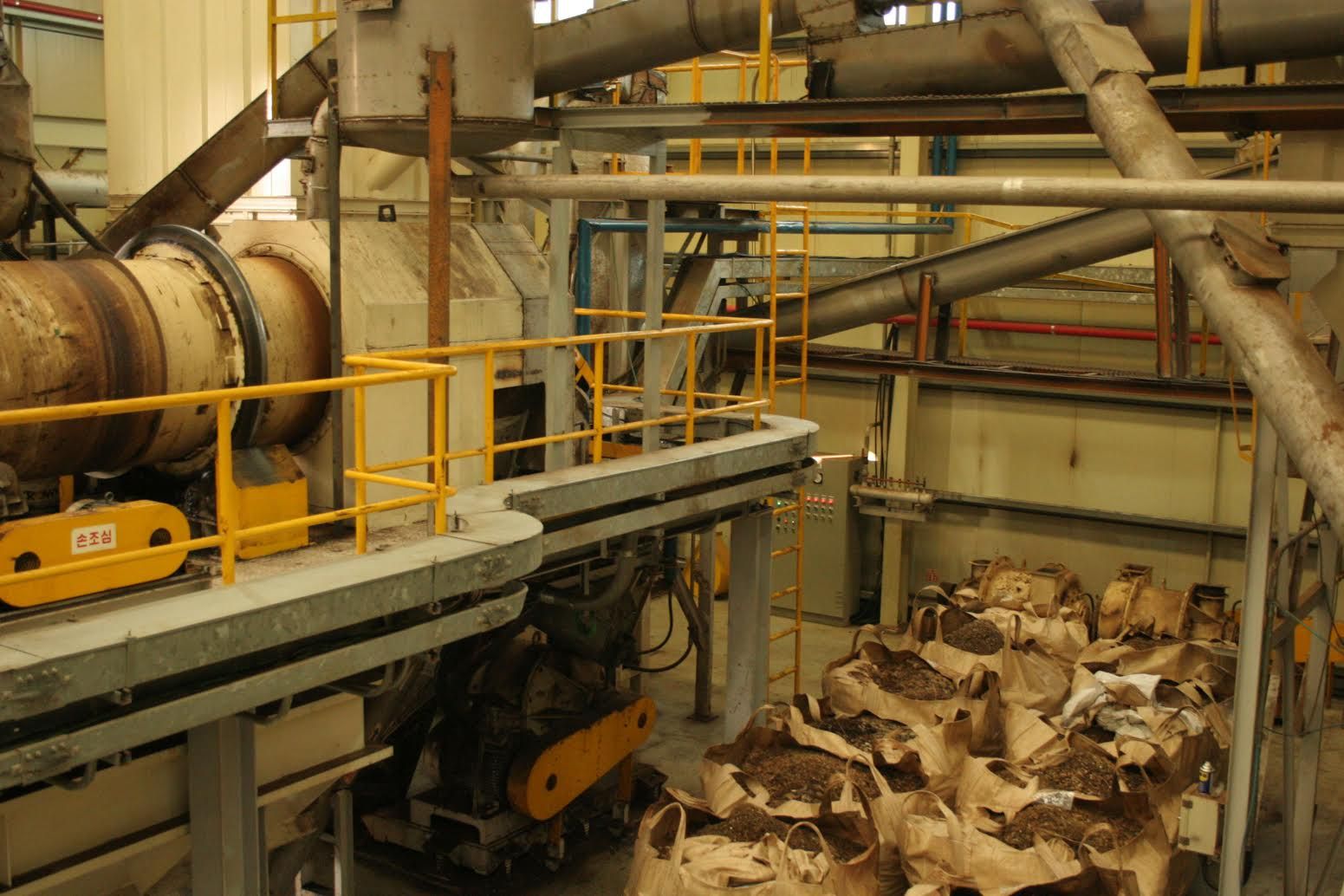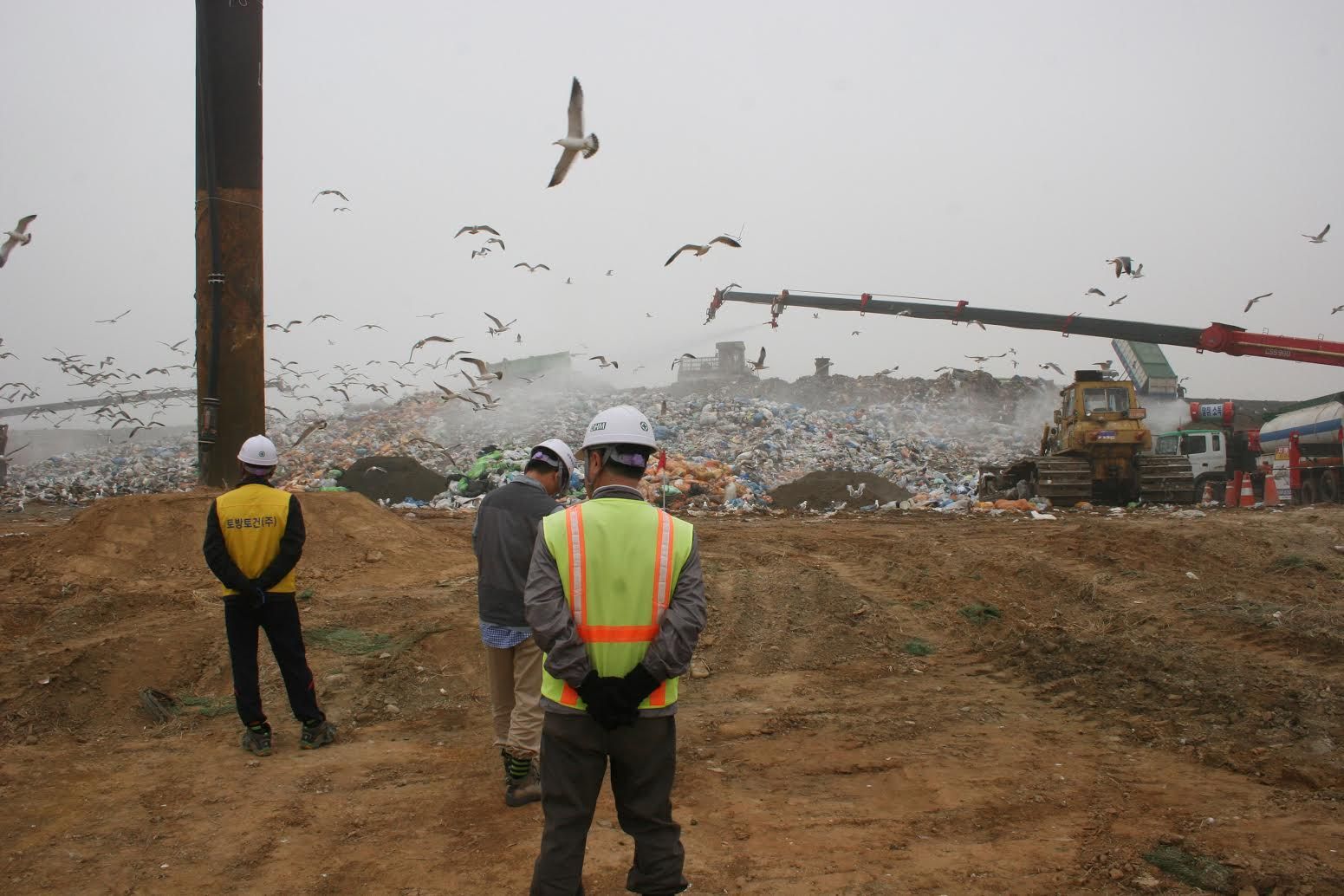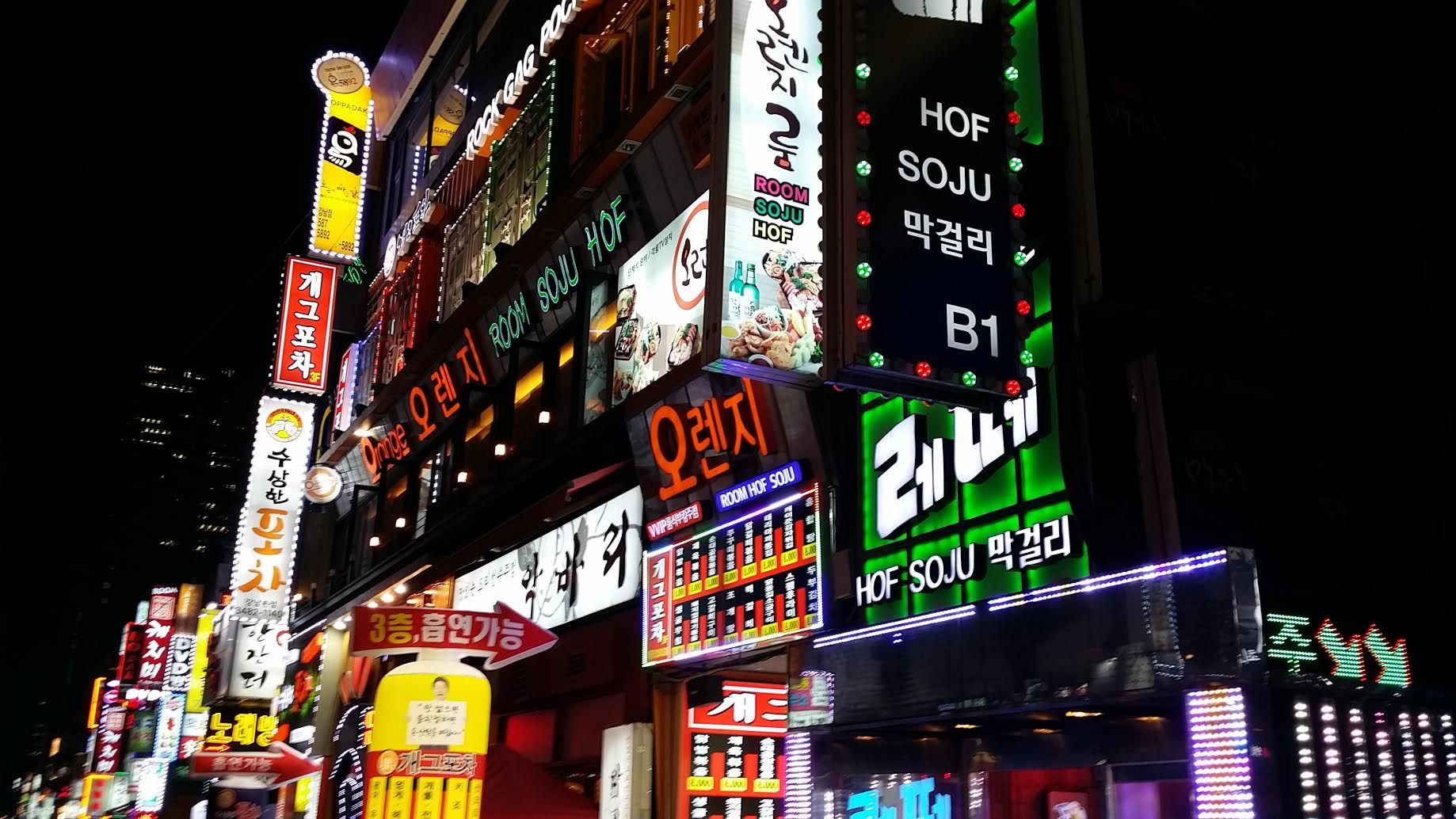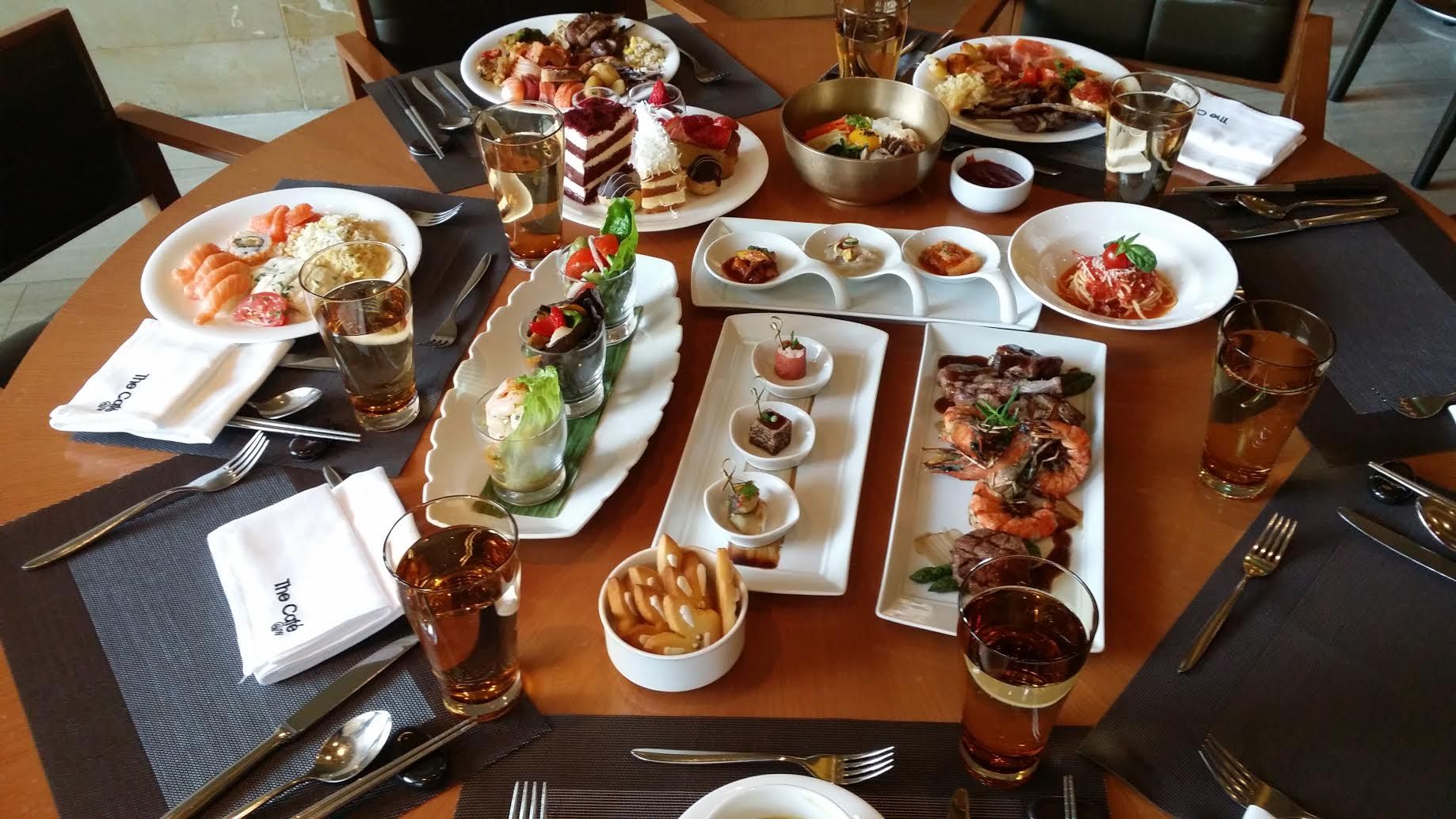It is 4 a.m. on a dreary April morning, and there is a lingering moment of pre-dawn quietness in Seoul, South Korea’s capital and the world’s third largest metropolitan area. This sprawling city is home to 25 million residents, half of the country’s population. It is almost twice as densely populated as New York, and eight times more dense than Rome.
Yong-suk Chung is up early.
“I am Yong-suk, Chung, the team leader for volume-rate garbage disposal in the Clean City Department at Sung-pa District Office,” he announces. He is dressed in a gray overcoat, polite yet official.
South Korea already enjoys the world’s strictest food waste laws. There is a nationwide ban that prohibits food residues from being discarded into landfills and waterways. And now, as one of the world’s most wired countries, the government hopes to utilize its technological supremacy to capture food straight from households and businesses and convert discards into valuable commodities and economic drivers. Chung is the man in charge of making this work.
In 2012, the government announced a nationwide roll-out of the Radio Frequency Identification (RFID) system, a futuristic garbage bin that serves as a depository for food waste, including here in Songpa-gu in the southeastern part of Seoul. With its 680,000 residents, including 290,000 who live in apartment buildings, it is the capital city’s largest district. Yong-suk Chung is here to demonstrate the high-tech system.
“If you look at this screen [showing the dumpster], it is 85 percent full so you can dump more in. If you look at this equipment, the disposed amount is 77 percent. When residents come, they tag the card here and the lid opens up like this,” says Yong-suk Chung as he taps a card against the machine to the tune reminiscent of a Star Wars soundtrack.
“Here you throw away the food waste and when you tag your card again, a weight of the disposed amount is recorded as the lid closes. This weight is then collected and analyzed at the Environment Corporation server via a wireless data system. The system accumulates the fee on a monthly basis, and each household receives a monthly food waste disposal bill.”
And there are some early successes: “The initial implementation resulted in more than 20 percent food waste reduction, and excellent progress was acknowledged, and from 2012, we have expanded our reach to localities nation-wide. As a result of the national spread of this method, today in approximately 90 localities nation-wide … food waste was reduced by more than 24 percent compared to last year,” explained Eun-kyeong Ko, waste manager at the Korea Environmental Corporation, a government-backed think tank that monitors the RFID’s implementation across the country.
Like most developed countries, South Korea has struggled with food waste. The United Nations Food and Agriculture Organizations (FAO) estimates that one third of global food production, approximately 1.3 billion tons, is wasted every year. Prior to anti-food waste legislation, South Korea produced about three times as much food waste as Taiwan, despite having only twice its population—making it one of the Asia’s major food waste culprits. (Currently the U.S. is the world’s largest food waster.)
By 2005, South Korea’s 50 million citizens produced an average 17,100 tons of food waste per day. Most of this waste has traditionally been treated at sewage plants, and the ensuing gray water was dumped into the country’s surrounding coasts at a rate of about 3,800 tons daily. The effect was catastrophic to coastal populations, especially to its fisheries and seaweed economies.
According to Seok-gil Lee, Secretary General of the Korea Food Recycling Association, “In 2004, this environmental factor prompted the direct disposal of food waste, and with the ban of the direct disposal, the environment improved rapidly. And it has gradually continued to improve. As South Korea ratified the London Convention we have gradually withdrawn from throwing away pollutants into the seas, in order to fully comply with the convention,” referring to the international treaty that aims to curtail coastal pollution.
Victoria Won, who with her sister Jenn was raised in Chicago but moved back to Seoul to join her family, said, “We definitely waste less food here than we would in the U.S. We have to pay for our food waste so we don’t like to throw away food. It’s not only the money, we just don’t like to be wasteful. But it helps that there is the law that helps us be more conscious about. Saving food is pretty much embedded in our system. Our parents are very conservative. It is the way we were raised. It’s how our parents did it, so this is how we do it.” And if this does not help, “big brother is watching.” Victoria laughs pointing out a number of video cameras that are monitoring every corner of their building’s collection facility.
By all accounts, South Korea’s modern day history is remarkable. Over the last forty years, the country has undergone an impressive transformation, emerging from a country with GDP levels on par with that of poorer African nations to become an economic powerhouse. Through a combination of strict laws, technology and an appeal to recent memory of bleaker times, the government is keen to solicit the participation of its citizens.
Seok-gil Lee agreed: “When our country was poor back then, there was no such thing as wasting food. In those times of poverty, everything that is edible was eaten, and even if rice goes bad and spoiled, they were mixed with water and eaten. But now that our country is better off, we are wasting a lot of food.”
Per capita income has also steadily risen from $80 per year in 1961 to reach $33,189 today. Today, there are more small eateries and restaurants in Seoul than in any other city in the world. And while more people with more disposable income are bound to consume and waste more, there is an element to Korean food culture that is inherently unique to the country. “The Korean diet actually consists of a lot of side dishes. Compared to other countries that have just bread, meat and vegetables, we have at least five or seven side dishes, which inevitably leads to various problems such as excess food waste,” said Mi-hwa Kim, Secretary General of the Korea Zero Waste Movement Network.
“Our country’s food waste has about 80 percent moisture content, which is a lot. So disposing of this generates wastewater in the form of leachate. So this gets soaked into soil and pollutes it, and there are a lot of malodor when the food waste rots,” said Seok-gil Lee. He talked about Kimchi, or fermented vegetables, which are spiced with a variety of seasonings, and have even been integrated into Western cuisine. Kimchi is one of the few mainstays of Korean culture that has not changed. Koreans may be served up to a dozen Kimchi side dishes at no charge at restaurants prior to ordering their main meals, just as Americans may receive bread at a restaurant in the U.S. And for Koreans, food, and particularly Kimchi, is a historical anchor that unites generations in a city that is rapidly changing. There are a few spots, besides the walled palaces turned museums, that serve as a refuge for the mainly older Koreans who have the time to recall an era before K-Pop and Psy’s Gangnam Style.
It is now 6.30 am in the Sungpa-gu District, and the blue garbage truck with its white-gloved garbage collectors has just uploaded the content of the last RFID equipped garbage bin. As Sungpa-gu residents start to trickle out of dozens of apartment complexes to begin their workday, the truck drives off loaded to the brim with some of the 360 tons of food waste that are collected every day across Seoul.
And there are important financial implications. Eun-kyeong Ko’s estimated “that South Korea’s food waste collection cost is equivalent to 5-6 percent of government’s annual budget.” And it is at this stage in the garbage collection chain that the government has sought out new economies to monetize this food waste. As the Sung-pa garbage trucks joined a long line of others at a recycling plant, Jang-guk Choi of Reclean Company explained: “Of these 180 tons we receive at this facility alone, approximately 10 percent is turned into animal feed products, or 36 one ton-bags. The sales generated from food waste turned into animal feed are worth approximately US$11,693,520 per month. The facility’s operating cost accounts for approximately US$8,770,140. Forty percent of the food waste treatment cost is supported by the municipal government. The remaining 60 percent is covered through the residents via their RFID payments.
And for a country that has leapfrogged into the high tech space with a vibrant consumer society, the solution to its old problem may just be to look at waste in monetary terms.

